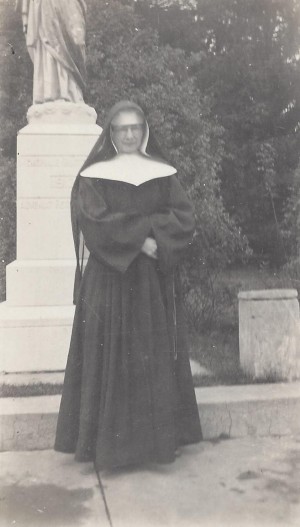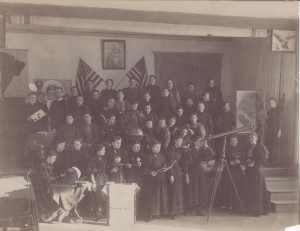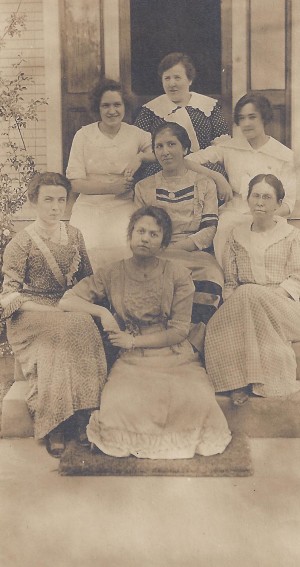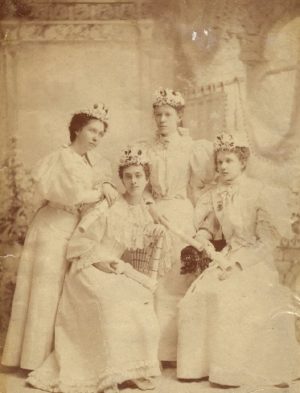Ursuline Sister Describes Schooldays in Gay Nineties
By Ann Tichenor
The Mount Vol. 30 No. 3 Page 3
Feb. 20, 1953
Sister William Hite
“We were always glad to get a clean, starched one,” explained Sister William [Hite], O.S.U., in an interview as she told of the gingham dresses she wore as a student of MSJ in the gay nineties.
Attending the Academy here from 1890-1895, Sister stated that only about 45 girls were in attendance, adding, “That was about all that could be accommodated at that time, until the new north wing was added.” In early days, all students were boarders. Small girls in the grades were also received into the school.
Sister Describes Uniforms
When asked about what uniforms the girls wore, Sister said the majority of girls wore gingham dresses, gray shawls, and white bonnets tied in a bow under the chin. Subjects offered were Latin, geometry, algebra, astronomy, English, religion, and logic. Teachers remembered were Sisters Denis [Forest] and Michelle [Drury], and Mother Aloysius [Willett], principal.
Academy in 1890
Continuing her reminiscences Sister added that school hours began at eight in the morning and ended at four in the afternoon with an hour for dinner. Girls who studied music ate dinner at 11:30, followed by practice. The others said the Rosary in the chapel at this time and ate later. At 4 p.m., Rosary was offered in the chapel again. So, the Rosary has always be a popular devotion among MSJ girls.
School Customs Changed
The opening of school was the first Monday in September, not dissimilar to present practice; but the closing date, the third Wednesday of June, would be a change. Another custom that would not be pleasing to today’s teenager was having no Thanksgiving, Christmas or Easter holidays at home. With no highways, the trip even to Union County was considered too long and hazardous to the young ladies of the time, said Sister.
One building, which was the original one erected by Father Volk, the founder, housed the dormitories, classrooms, kitchen, dining hall, library, chapel, infirmary and recreation room.
While Sister was a school girl here, she recalls that the present infirmary was built in 1892 [east end of the Academy building]. Sister Mercedes [Wathen], infirmarian at the time, was noted for the cold remedy which she prescribed, red-hot pepper tea, Sister laughingly recalls.
A club from 1911. The names of these young ladies are unknown.
Activities Included Sodality
Activities included Sunday meetings of Blessed Virgin’s Sodality and Sacred Heart League. In place of an orchestra, the girls had a small band. During recreation, the chief activities were square dancing, waltzing and the Virginia reel. Ball playing and croquet were favorite outdoor sports. A closed retreat once a year is still an annual event.
One of the great events in spring was the celebration of May Day. A girl known for her virtue was chosen by popular vote to be queen and to preside over the day’s events. Banquet in the dining room followed by toast program, Maypole dance on the campus, and crossing of the Queen were traditional.
Graduating class of 1895. Standing: Rebecca Lancaster (Mrs. Ernest Bonurant), Teresa Jenkins (Sr. Ursula)
Seated: Lelia Kohl (Sr. Angela), Ada Hite (Sister William)
When young ladies graduated in the nineties, they were “laurel crowned” with artificial flowers. Diplomas were huge affairs of about 26 by 24 inches. Sister recalls that of the four graduating with her, three became religious.



